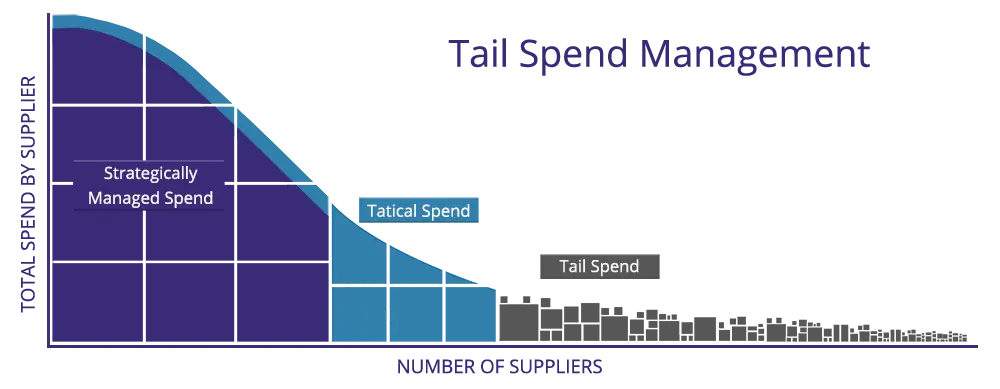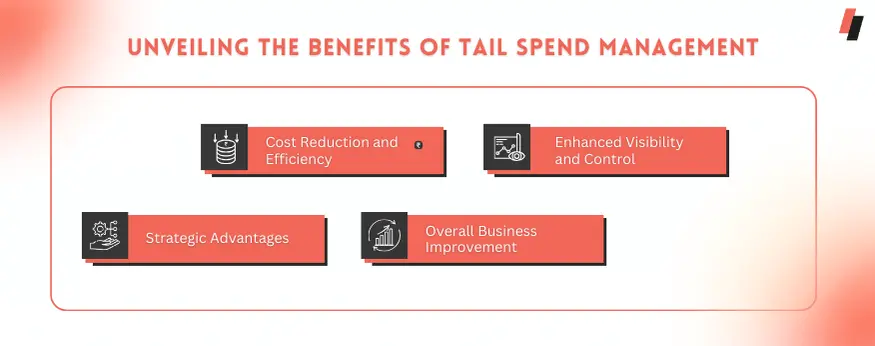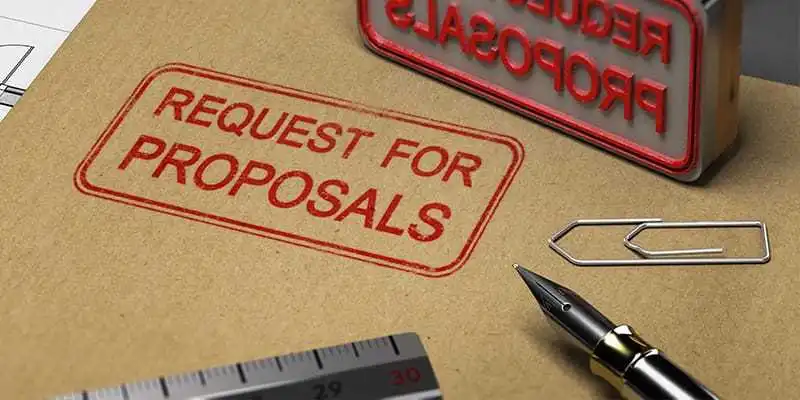Has it ever happened to you where you feel your procurement process is good, but then things change once the end-of-quarter spend is visible? Now, a long line of low-priorities and hard-to-verify expenses has gone unattended. Let’s discover the secret of tail spend, the undercover budget-eater most organizations fail to notice. Many firms in hospitality, construction, IT and other areas find that up to 20% of their overall procurement involves tail spend, but they often fail to watch over or look after it. But there’s a surprising fact: all the little contributions of inefficient business decisions add up and can cause huge problems. In this writing, we’ll focus on what tail spend means, the importance of managing it and how Pro Procurement can guide you with strategic sourcing, useful resources and up-to-date solutions.
What Is Tail Spend ?
Tail spend is made up of many small, less important purchases that are not part of a company’s formal procurement guidelines. They involve goods we need quickly such as temporary office supplies, quick-service contractors and tiny hardware parts that are usually purchased outside the usual procurement channels. Although each transaction is often small, when many are added up, they can cost a lot, involve risks and make the company’s total spending harder to follow.

“Tail spend is something like a cluttered desk drawer you’re aware of it, but you don’t pay attention to it until you need something important.”
Procurement experts point out that just 20% of your purchasing takes up 80% of your suppliers’ capacity, yet this category is frequently left unmanaged.”
Examples of Tail Spend in Different Industries
Hospitality Industry: Hotel management can ensure that premium food, beverages and linens are well sourced, even if they don’t pay close attention to frequent purchases for items like toiletries, bulbs or repairs.
Construction Industry: There are strict rules for heavy machinery and bulk products, but it is the unplanned acquisition of tools, replacements for safety gear or food for workers that usually leads to tail spend.
Information Technology (IT): In IT, major deals for software and infrastructure are overseen centrally, yet things like purchasing cables, adapters, minor cloud services or hiring freelancers at short notice can often go unnoticed.
Why Tail Spend Matters
At first, tail spend may look like it’s not worth focusing on. Since these expenses are fairly small, they aren’t a problem after all? The truth is, if tail spend isn’t managed, it can truly break your procurement budget. If you ignore it, it’s as though you have a small leak under the sink and its effects only become worse after a while.
Here’s why tail spend deserves your attention:
- It builds fast: On their own, each line item for tail spend is not large, but since there are so many of them each year, multi-site businesses can still end up spending millions.
- They are in Compliance and Risk Nightmare: Many times, tail spend deals are made with unknown suppliers, agreements are not standardized and people purchase things outside the rules. As a result, compliance, security and the company’s image might be endangered.
- It can obscure Ways to Save: If firms can’t see tail spend, they may lose out on cheaper bulk buys, the option to reduce the number of suppliers and good terms for payments.
- It Costs Time and Money: Managing paper invoices, handling off-contract orders and fixing problems with providers are some of the tasks targeted at procurement teams, but they aren’t strategic and aren’t easy to scale.
Challenges of Managing Tail Spend
It might sound simple to manage tail spend just check small investments and try to optimize them. In truth, it is one of the hardest parts of procurement thanks to its divided and hidden way of doing business. Let me explain why companies have trouble with culture:
Lack of Visibility
Tail spend is commonly found in many different departments, regions and among employees. Without a central system, it’s difficult to find out who is making what purchases and from whom.
Decentralized Purchasing
Tail spend items are commonly bought by office staff, regional managers or project managers who deal with contracting outside the procurement team or by using their own expense forms. As a result, decentralization produces the following:
- Increasing spending outside the budget
- Lost the chance to buy at a discount price for a large order
- Higher chances of risks from suppliersHigh Transaction Costs
Surprisingly, the lowest value contracts are often the priciest to complete. Handling every small order by processing approvals, preparing invoices and onboarding vendors costs too much and makes them unprofitable.
Risk and Compliance Gaps
Buying small amounts from suppliers who do not comply may risk your business.
- The risk of legal problems
- Low-quality goods or services
- Pricing that can vary from one time to another
- Problems related to breaches of security (mostly in IT and services)
Benefits of Tail Spend Management
Although tail spend is usually overlooked, proper management makes it a key source of savings, greater efficiency and better control. If organizations pay attention to tail spend, they can experience benefits that improve multiple steps in procurement.
- Cost Savings: There are many ineffective things happening with tail spend, including duplicates, missed savings and higher expenses from vendors not considered preferred. Controlling this will help companies accomplish the following:
- Negotiate better deals
- Limit the number of suppliers your business uses.
- Stop buying things you don’t really need.
- Better compliance and fewer risks are now possible: Usually, tail spend goes unnoticed, but once it’s managed, it becomes audit-ready, compliant with rules and under contract. As a result, you add better controls and strengthen the way you manage procurement.
- There are fewer purchases that people shouldn’t be making.
- More careful supplier review
- More ability to oversee where money is spent
- Operational Efficiency: Processing low-cost orders by hand adds unneeded tasks. With tail spend solutions, workflows are made automated, approvals are speeded up and the need for regular administrative tasks decreases so your team can do more meaningful work.
- Smarter Decision-Making: Companies can use the information in real time to decide on suppliers, choose budgeting categories and carry out more informed budget planning. Instead of being a cost center, tail spend starts to work in our favor.

Tail Spend Management Strategies
Managing tail spend is not just about tracking every tiny expense; it’s about setting up systems and frameworks that keep those expenses under control and make them cost less. These are the top ways to turn tail spend from a problem into a source of profit:
Separate and Examine Your Expenses
You should start by figuring out what tail spend means in your company. You need to take a close look at your data to discover how funds are used and what drives those expenses.
Design Unique Purchasing Policies for Lower Cost Items
Standardized procedures don’t meet the needs of tail spend. Simply trying to use the same system for a $50 purchase as for a $500K contract is not a good idea staff won’t stick to it because it’s too much work. In place of complex ways, create suitable paths and processes for this kind of spending.
Gather Your Suppliers Under One Supplier Scheme wherever possible
It’s common that there are hundreds of suppliers performing nearly the same functions for tail spend. It makes your purchases cost more and takes up more of your time. A wise approach is to bring together numerous suppliers and have just a few reliable suppliers on board.
Wherever possible, rely on automation
When a company relies on manual methods, tail spend can get out of hand. If all small transactions require things like invoicing and approving POs to be handled manually, costs increase a lot. Automate how you manage your tail spend using:
- Sites for electronic purchasing
- Digital supplier lists
- Self-service ordering systems
Tools & Technology for Tail Spend Optimization
Handling tail spend is not simple since it often involves many diverse, low-cost purchases that are not included in strategic sourcing. Today, technology helps companies discover, control and maximize the way they manage their tail spend. We will now look at some tools that have a major influence across different industries:
Spend Analysis Software
Spend analysis software is key to easy tail spend management by combining and examining data from many sources. With these tools, organizations can see where their money is being spent, notice any suppliers providing the same products or services and discover ways to save money.
E-Procurement Platforms
These platforms automate the process of ordering, obtaining approval and completing an order. When companies integrate these platforms, maverick spending drops and it becomes easier to supersede preferred suppliers’ rules for tail spend items. sWith these tools, organizations are able to control and manage more tail spend. In this field, many users prefer to work with Oracle Procurement Cloud, SAP Ariba and Proactis.
AI-Based Tools to Detect Patterns
To detect spending that may remain hidden in tail spend, companies increasingly depend on AI and ML solutions. With these tools, risks can be predicted, non-compliant buying can be detected and alternative ways to buy can be suggested from past information. Automation using AI makes it possible for teams to manage tail spend, cut their budgets and maintain trusted supplier relationships.
Tail Spend Management in Hospitality & Construction Procurement
Managing tail spend in hospitality and construction is difficult because both fields have decentralized purchasing and deal with many types of suppliers. Typically, cleaning supplies, maintenance plans and food are what make up the tail spend category in hospitality. Problems arise in tracking and following the rules, since these services are often divided between various parts of the company. With e-procurement platforms, you can manage purchases from one place, reduce buying from outside lists and stick to your preferred partners. When hospitality businesses use spend analysis software, they can detect when costs rise and make sure their procurement is carried out efficiently. Some construction projects end up making unplanned purchases when they need quick access to certain safety kits, equipment or minor materials while on the site. Most of the time, these purchases happen quickly, without going through official procurement procedures. In order to do this, construction companies are relying on AI technology to spot similar buying habits and alert specialists to any violations or repetitions. Together with spend analysis, these tools support both lower costs and using fewer suppliers, even on fast projects.
To learn more about how AI and spend analysis are transforming procurement processes, visit our Hospitality and Construction Procurement Solutions page.

Conclusion
Handling tail spend well has become essential for companies hoping to achieve success in their procurement and boost profits. At Pro Procurement, our services are built to help businesses find hidden value in the part of their procurement referred to as tail spend. We combine innovation and best practices to make handling tail spend easier, make compliance mandatory and save companies extra costs. Pro Procurement provides tailored approaches to hospitality sectors needing centralized procurement and construction firms looking for immediate project spending details.
FAQs
Q1: Why is tail spend usually ignored by many companies?
Because they are often small, it’s not hard to see why people ignore them, but over time they can really hit your budget.
Q2: What sorts of expenses are usually considered part of tail spend?
Office goods, fixing services, emergency tools or one time vendors needed for business travel.
Q3: Is it actually important to reduce and control tail spend?
It is true dealing with it can help companies find more savings, cut down on waste and strengthen how they handle procurement.
Q4: What role does technology play in controlling tail spend?
Using tools such as software for analyzing expenses, e-procurement systems and AI, a company can enhance and manage their tail spend.
Q5: Why is Pro Procurement recommended for overseeing tail spend management?
Using both advanced programs and industry insight, Pro Procurement helps you spot and reduce unmanaged spend in your company.







